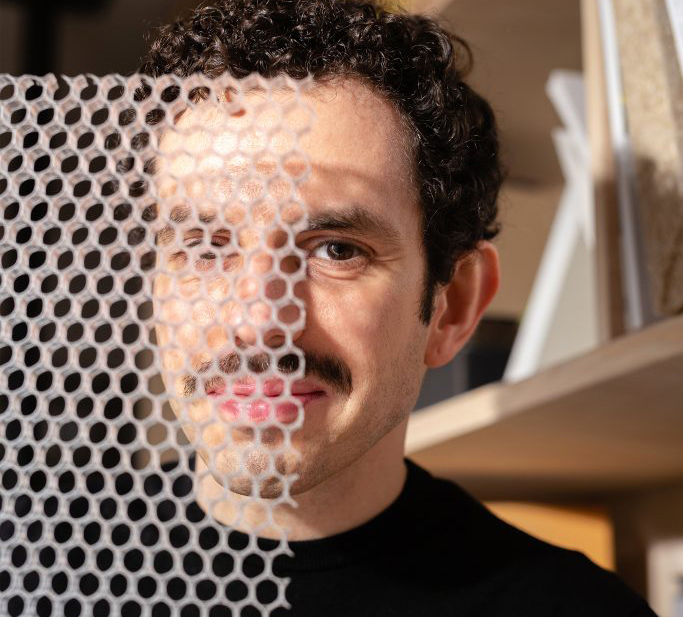Luca Marinelli – Detail(ed) Solutions
Joined Kinzo in 2021

Hey Luca, tell us a little bit about yourself and your interest in architectural details.
My study experience was a nice and long journey. At first, I graduated in Interior Design in Rome and then I decided to enroll in the Faculty of Architecture to get a more solid education. I liked studying architecture, but my heart has always beaten for interior design! I have been working at Kinzo for three and a half years and worked mostly in the construction documents phase. I worked on the project for the Suhrkamp publishing house, the new Nike Headquarters, and also designed the details for our Kinzo office. During my studies, I was always fascinated by construction details. I have continued during my work experience to deepen this aspect by collecting experiences in different fields, from fair trade exhibitions to architecture. I think details play a crucial role in a project because they show the quality of it. In designing a constructive detail, not only aesthetics but also functionality must be guaranteed. A good detail is one that fits into the general concept of the project, supporting the formal and technological choices. Sometimes the constructive detail is used to hide (for example installations or cables) and on the contrary, sometimes it is the key to emphasize and give aesthetic value.
What is your approach to the drawing/design process?
I personally use hand sketch just for the first rough idea and then I start drawing with CAD softwares so extreme precision and definition can be achieved. The big variety of CAD drawings available online from manufactures also allows the integration of the exact product into the design process from ideation to realization.
"Experience on the construction site is essential and you never stop learning."
How do you continue to build your knowledge and keep yourself up-to-date?
Experience on the construction site is essential and you never stop learning. I usually consult magazines and attend lectures, but I also find a lot of inspiration on social media, Instagram in particular.
In terms of materiality, what is the relevance of materials in your detailing?
The choice of materials and their use is another fundamental aspect. I think it is important to use quality materials. The task of the architect is to convince the client to use high-quality and durable materials maximizing life cycle and reducing impact on the environment. It is also important to use materials in an honest way and take advantage of the different physical and mechanical characteristics, adopting them for the right technological solution. My personal pproject in detailing is when two different materials come together. I think this is the most interesting moment, where the construction detail reveals its quality.
In your experience, how have clients responded to certain special details? Do you often have to convince them?
There is not a formula, it is always different. I think the aspect most appreciated by the client is the creativity in solving certain problems with clever and innovative solutions. Even a constructive detail can express a strong idea and in this case there is usually no need for the customer to be convinced. The only thing that can hold him back is the budget. Often it is possible to find a solution to realize the detail as it was thought, but sometimes you also have to make a compromise.
What is a challenging aspect of detail execution or planning that you generally encounter? Do you have a favorite detail from a project you have worked on in the past?
The most challenging detail solution is one that involves a lot of different planners. It happens sometimes that in one object – lighting, electricity, AV and acoustic elements all need to be integrated. This might sometimes turn the whole process into a challenge and create problems to hit the deadline, as many different aspects and people need to be coordinated. An interesting experience was working on the construction details of our office. Working on construction details in the same space where the project was going to be built developed an interesting relationship between the project and its realization. During the design process I was able to continuously check on site whether the solution would work or not. A luxury that almost never happens!